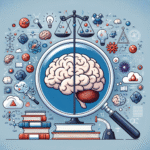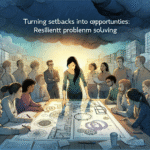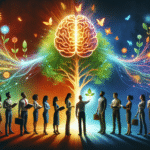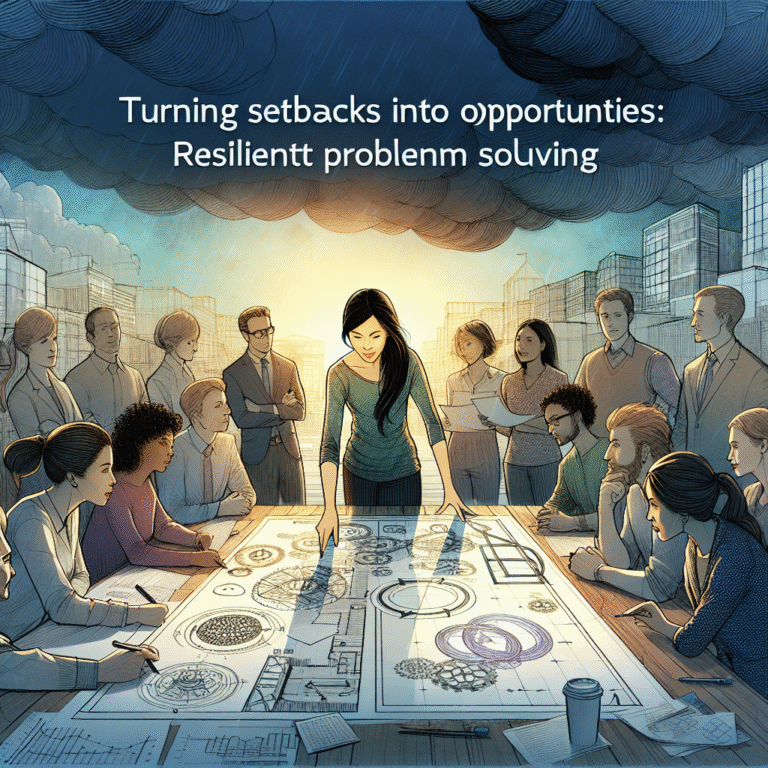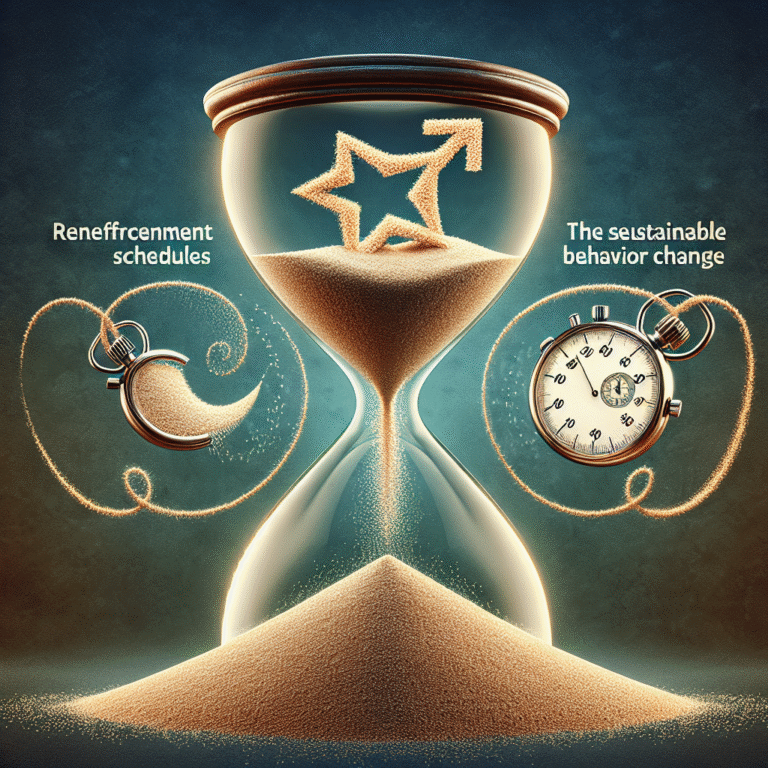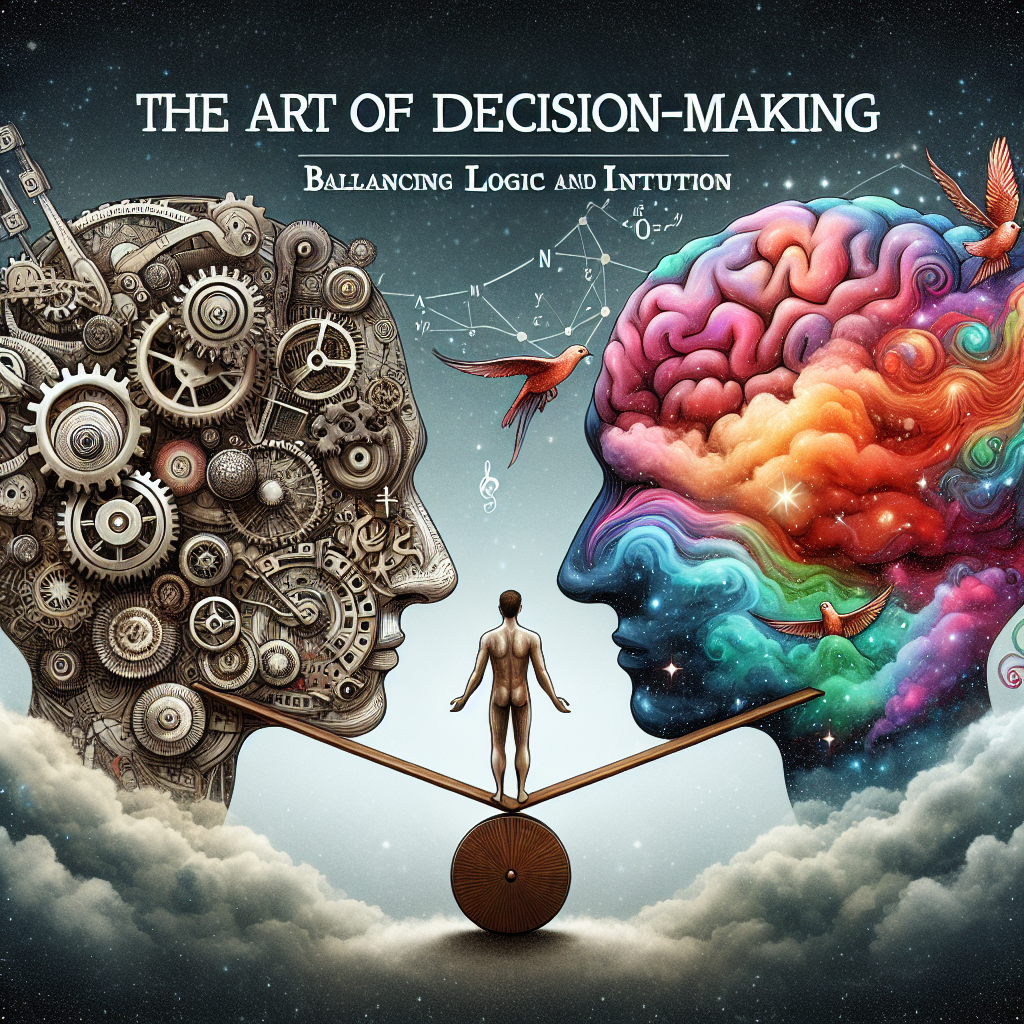
Introduction
In a world overflowing with choices, the ability to make sound decisions has never been more crucial. Whether it’s choosing a career, making financial investments, or even deciding what to eat for dinner, every choice adds up, influencing the trajectory of our lives. At the heart of effective decision-making lies the delicate balance between logic and intuition. The Art of Decision-Making: Balancing Logic and Intuition is not merely a skill reserved for leaders or executives; it’s an essential toolkit that everyone can wield to transform their lives. So, how can we harness both analytical reasoning and gut feelings to improve our decision-making processes?
In this comprehensive piece, we’ll explore the intricacies of decision-making, delve into relevant case studies, and glean actionable insights that will empower you to master this art.
Understanding Decision-Making: The Basics
What is Decision-Making?
At its core, decision-making involves selecting a course of action from a range of alternatives. This process can happen in an instant or involve prolonged contemplation, depending on the complexity of the situation. Decision-making is influenced by various factors, including cognitive biases, emotions, and sociocultural backgrounds.
The Role of Logic
Logic refers to reasoning conducted according to strict principles of validity. It encompasses analysis, deductions, and empirical data, focusing on facts and evidence to guide choices. For example, when deciding on a car to buy, a logical approach might involve researching various models, comparing prices, and evaluating fuel efficiency.
The Role of Intuition
Intuition, on the other hand, operates on a deeper, often subconscious level. It’s the ‘gut feeling’ that surfaces when faced with a choice, drawing upon personal experiences, emotions, and even cultural context. For instance, a seasoned manager may intuitively sense that a potential hire would fit the company culture, even before reviewing their qualifications thoroughly.
Why Balance is Essential
Balancing logic and intuition is essential for effective decision-making. Relying solely on logic can lead to analysis paralysis, where overwhelming data hinders timely choices. Conversely, basing decisions entirely on intuition can result in rash choices that lack foundation. The Art of Decision-Making: Balancing Logic and Intuition offers a pathway to combine both elements harmoniously, leading to more holistic decisions.
The Science Behind Decision-Making
Psychological Insights
Understanding the psychology behind decision-making can provide invaluable insights into why we behave the way we do. Cognitive biases, such as confirmation bias and anchoring, can skew our judgment. Emotional regulation plays a role as well; high-stress situations can cloud reasoning abilities. Research shows that engaging in mindfulness techniques can enhance decision-making quality by improving emotional regulation.
| Bias Type | Description | Impact on Decision-Making |
|---|---|---|
| Confirmation Bias | Tendency to favor information that confirms pre-existing beliefs | Limits objective analysis |
| Anchoring | Relying too heavily on the first piece of information encountered | Distorts overall assessment |
| Overconfidence | Overestimating one’s knowledge or abilities | Leads to risky decisions |
Case Study: The Ford Pinto Decision
One of the most infamous examples of flawed decision-making is the case of the Ford Pinto. In the 1970s, Ford executives chose to prioritize production speed over safety when they discovered that the Pinto’s gas tank design was prone to explosion upon rear-end collisions. Relying heavily on logical cost-benefit analysis, they concluded that the financial ramifications of recalls would outweigh the costs associated with injuries or fatalities. This disastrous choice led to legal battles, a tarnished reputation, and tragically, the loss of lives.
Relevance: This case illustrates the danger of over-leaning on cold logic. While cost analysis is vital, it must be balanced with ethical considerations, values, and the well-being of individuals—true hallmarks of the Art of Decision-Making: Balancing Logic and Intuition.
Practical Approaches to Decision-Making
Techniques to Enhance Logical Reasoning
SWOT Analysis: This framework helps evaluate Strengths, Weaknesses, Opportunities, and Threats associated with a decision, promoting a comprehensive assessment of options.
Cost-Benefit Analysis: By quantifying advantages and disadvantages, individuals can better understand the numerical implications of a decision.
- Pro-Con Lists: A simple yet effective tool, drawing up lists helps clarify thought processes and enables a clearer view of possible outcomes.
Techniques to Enhance Intuition
Mindfulness Practices: Meditation and mindfulness can facilitate clear thinking, alleviate stress, and enhance intuitive insights.
Visualization Techniques: Envisioning potential outcomes can provide clarity and tap into subconscious knowledge.
- Journaling: Recording thoughts and feelings can sharpen emotional awareness and support intuitive decision-making.
Integrating Both Approaches
To achieve mastery in The Art of Decision-Making: Balancing Logic and Intuition, practitioners should blend both methods seamlessly. Here’s a simple framework:
Identify the Decision to be Made: Write down the decision and its significance.
Gather Data: Conduct logical analysis using techniques like SWOT or pro-con lists.
Engage in Reflection: Commit time to meditate or visualize the situation, tuning into your intuition.
Seek Feedback: Discuss potential choices with trusted individuals who can provide an external perspective.
- Make the Decision: With a holistic understanding, trust yourself to make the final call.
Case Study: Google’s Hiring Process
Google is famous for its innovative hiring practices that emphasize both logic and intuition. The tech giant employs data-driven metrics to assess a candidate’s skills and fit for the team. But they also incorporate a multi-stage interview process that allows assessors to get a "gut feeling" regarding a candidate’s cultural fit.
Relevance: By recognizing that skill alone doesn’t guarantee success, Google exemplifies The Art of Decision-Making: Balancing Logic and Intuition. This dual approach ensures that the company hires not just qualified candidates but those who also align with its unique culture.
Real-World Applications of Balanced Decision-Making
Business Decisions
In business, the Art of Decision-Making: Balancing Logic and Intuition can lead organizations to sustainable growth. Following the 2008 financial crisis, many businesses faced pivotal decisions. Companies that relied entirely on data-driven forecasting without considering market sentiment experienced stagnation. Conversely, those that integrated insights about consumer emotions and societal trends thrived.
Personal Decisions
On a personal level, balancing logic and intuition can guide choices in relationships and health. For instance, deciding to continue a relationship may involve a logical evaluation of compatibility alongside intuitive feelings about emotional connections.
Leadership Decisions
Leaders must often make quick and impactful decisions. For instance, when strategic pivots are necessary, relying solely on analytics may miss out on team dynamics and morale. Effective leaders consider both cold hard facts and the emotional climate of their teams, ensuring healthier organizational outcomes.
Common Challenges in Decision-Making
Overthinking vs. Impulsivity
One major pitfall in decision-making is overthinking, which can lead to paralysis by analysis. Conversely, acting impulsively without sufficient information can yield unfavorable outcomes. Balancing logic and intuition helps mitigate both extremes.
Conflicting Advice
In an era of information overload, individuals often receive conflicting advice from various sources. Balancing analytic and instinctive thoughts helps sift through the noise, allowing for informed and confident choices.
Conclusion
Mastering The Art of Decision-Making: Balancing Logic and Intuition is a powerful skill that can be harnessed by anyone willing to invest time in self-awareness and growth. As we’ve discussed, integrating both analytical reasoning and intuitive insights leads to more informed, holistic choices—both in personal lives and professional arenas.
As you reflect on the principles shared in this article, consider the decisions you face today. Are you leaning too much towards logic or intuition? Strive for that harmonious balance, and you will unlock the potential for transformational change.
FAQs
What is the best way to start balancing logic and intuition?
- Begin by assessing small daily decisions using both methods. Reflect on the outcomes to understand better how they complement each other.
Can intuition be trusted in decision-making?
- Yes, especially when developed through experience. However, it’s essential to ensure it is informed by past knowledge to avoid biases.
How does stress affect decision-making?
- High-stress situations can impair logical reasoning, leading to rash or emotional choices. Mindfulness can help mitigate this effect.
Are there tools specifically designed to aid decision-making?
- Yes, tools like SWOT analysis, decision matrices, and pro-con lists can enhance logical reasoning, while visualization techniques can help strengthen intuition.
- What are some signs that I need to reevaluate my decision-making process?
- Signs include consistently poor outcomes, feeling overwhelmed by choices, or receiving feedback indicating a lack of thoughtfulness in your decisions.
The journey to mastering The Art of Decision-Making: Balancing Logic and Intuition is a continuous one, and every conscious effort you make toward improvement is a step forward in your personal and professional growth. Embrace this journey, and watch as your decision-making skills flourish.
